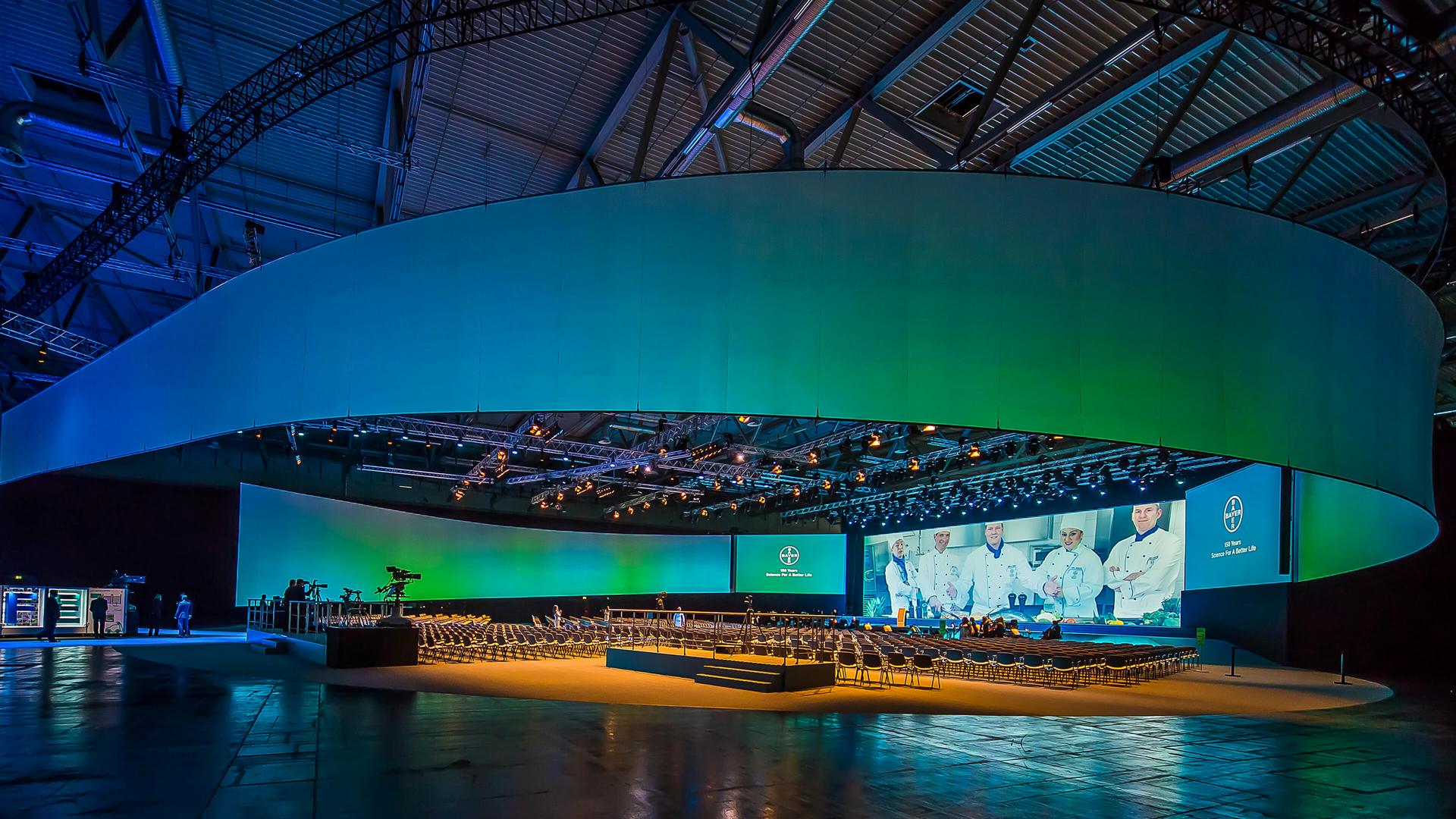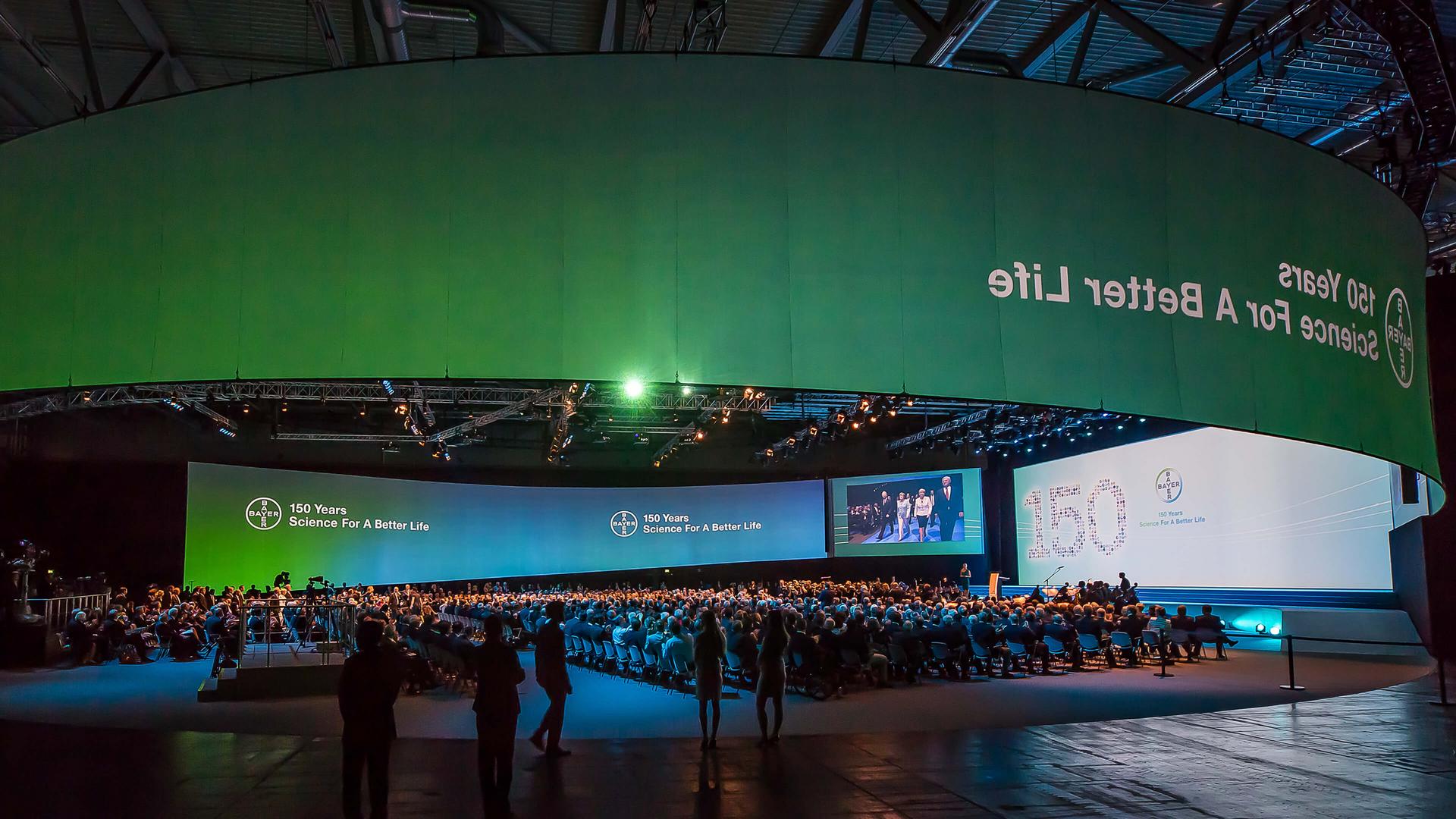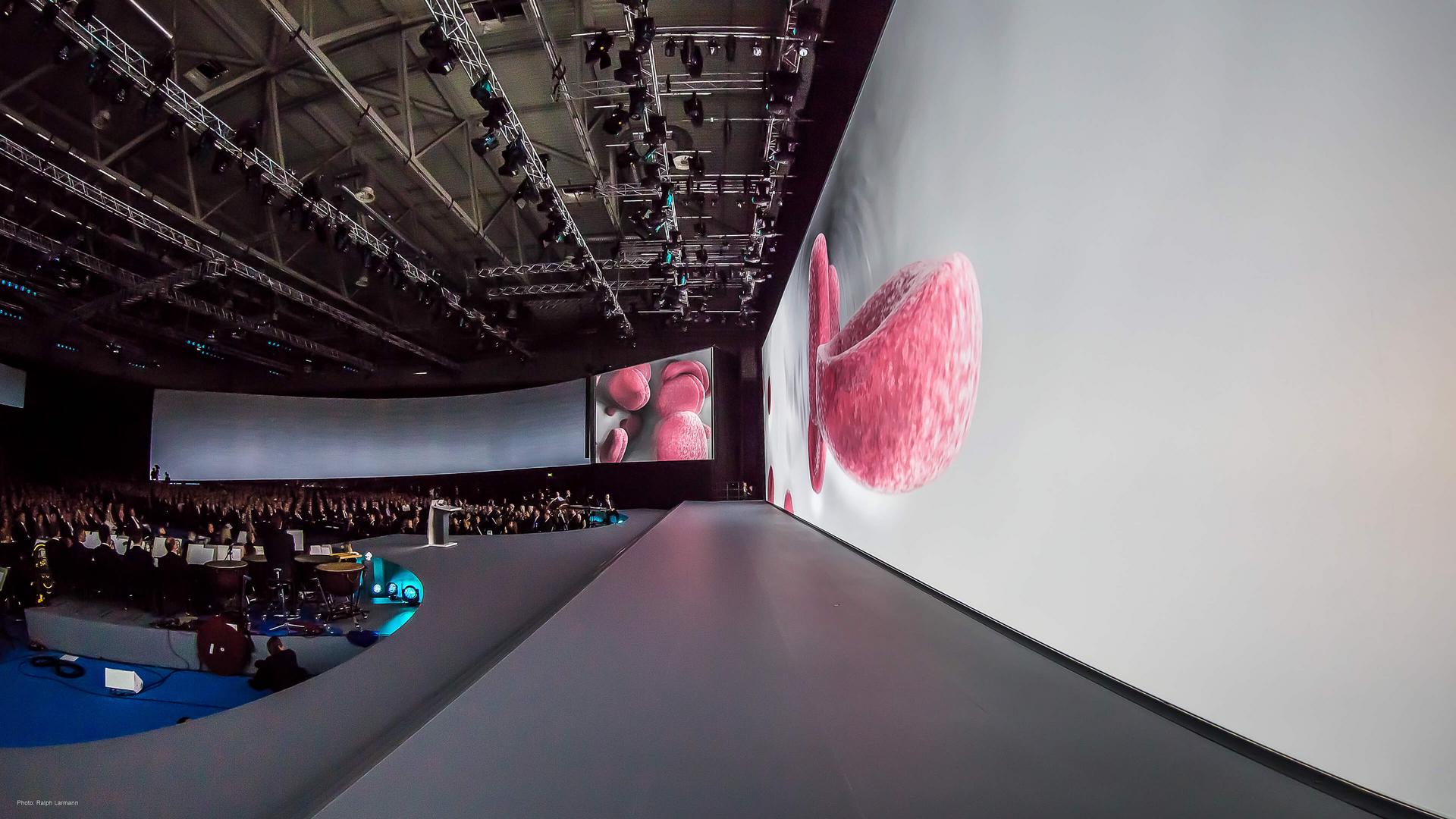Neumann&Müller engaged for three events in connection with the Bayer jubilee
The businessman Friedrich Bayer and his friend and researcher, the dyer Johann Friedrich Weskott, stood experimenting at two kitchen stoves in what is nowadays Wuppertal-Barmen – and discovered how to make a dye by the name of fuchsine. They founded a small, innovative dye factory, thereby laying the foundations for today's global enterprise. This July, in a ceremony at the Koelnmesse exhibition centre, Bayer AG celebrated the founding of the company 150 years ago. Over 1,000 guests were in attendance at the Congress Centrum Nord, including chancellor Angela Merkel and the minister president of North Rhine-Westphalia Hannelore Kraft.
A veritable firework of shapes and colours exploded on the large central projection surface and a flood of images broke over the hall: ballet dancers whirled over the stage accompanied by the sounds of the Bayer Philharmonic Orchestra. In the spectacular show designed by the Cologne media artist Andree Verleger, the dancers operated the screens like giant touchscreens causing scenes and photos to appear – situations from everyday life in which we have now come to take Bayer products for granted.
Neumann&Müller Veranstaltungstechnik was engaged by BBDO Live to provide the lighting, video technology and rigging. The team led by Jeremy Menge and Frank Herbert realised the concept for the production with 30 Panasonic PT-DZ21K projectors for the rear and front projection of the photos and videos, over 160 moving lights and 650 kilowatts of conventional light.
Two weeks previously, what was probably the largest birthday party in the history of the company had taken place in the BayArena: over 30,000 employees from all of Bayer's German locations celebrated under the motto "We are Bayer!" along with their families and the company's retirees. In a high-spirited atmosphere, they experienced a two-and-a-half-hour programme with an acrobatic display, drum performance and comedy. 1,500 employees from Bayer's sports clubs and cultural societies turned the party into a unique experience with their outstanding choreographies. Further highlights included audience participation activities such as forming a human Bayer cross or when the enterprise's largest choir broke into a rendition of the jubilee song "A better life". The grand finale was provided by the violinist David Garrett, who gave a concert accompanied by the Bayer Philharmonic Orchestra.
The VOK DAMS agency for events and live marketing placed responsibility for the projection technology and signal distribution in the stadium in the hands of N&M. Alexander Wolf and his colleagues provided four wired full HD broadcast camera systems plus a wireless Steadicam and a shoulder camera; they also took charge of vision mixing for the two LED walls and arranged the satellite uplink. A Riedel "MediorNet" with four nodes positioned around the stadium was used for signal distribution; the nodes were wired in a ring topology to ensure redundancy.
In its jubilee year, the enterprise also hosted "Jugend forscht" – Germany's national competition for young researchers – here in the BayArena in Leverkusen, where the best young scientists presented their results in seven different fields: the working environment, biology, chemistry, earth sciences, mathematics and informatics, physics, and technology. The winners and runners-up received their prizes at the beginning of June at a ceremony attended by the minister for education and research Johanna Wanka.
N&M was commissioned by Bayer itself to realize the sound, light, video and rigging for this event. In this project, the team led by Gerhard Hald had a particular challenge to master: the ceremony to mark the final of the competition was the first non-footballing event of its kind in the arena. And for the first time, the supporting structure of the stadium roof was used to mount supplementary equipment in addition to that already installed at the venue, with a special 53-meter high truck-based working platform with a steerable rear axle being used to mount the motors. A worthwhile measure as both the Leverkusen club sponsor and its service providers were at pains to protect the hallowed turf.


